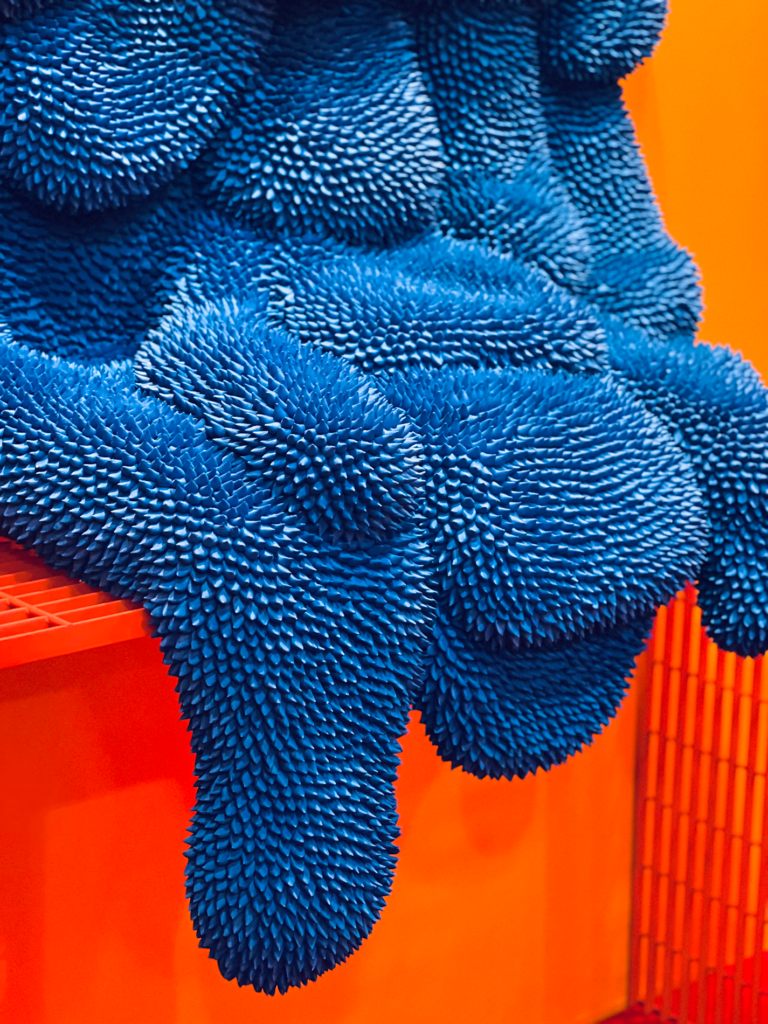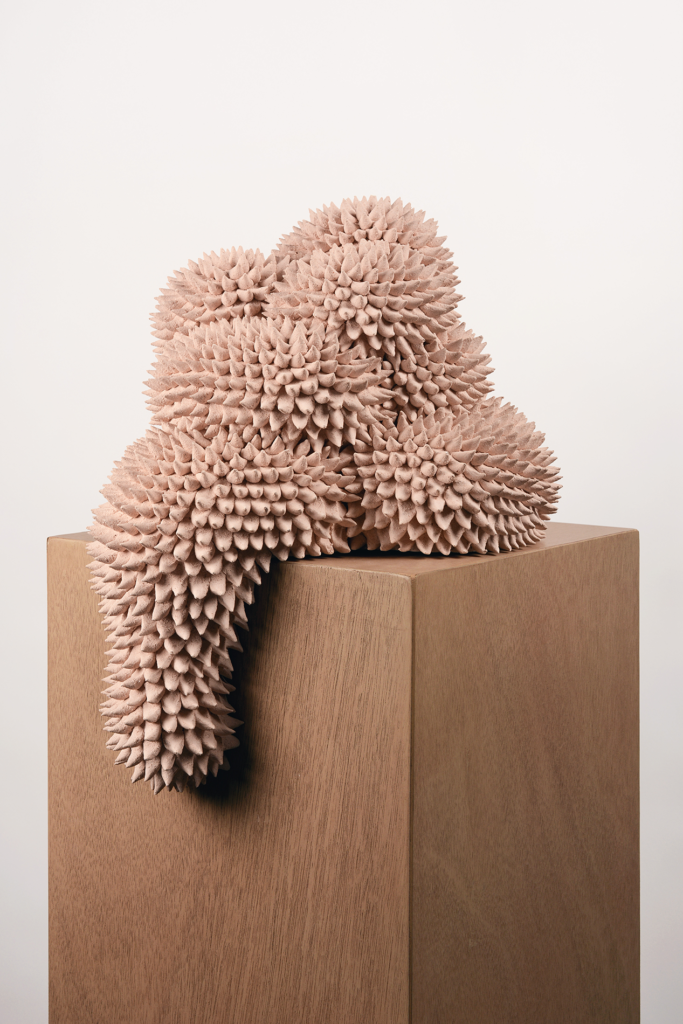
Interview with artist,
Andres Anza
Interview by: Juan Marco Torres
Photo Credit: Courtesy of the artist
Andrés Anza is a visual artist from Monterrey, Mexico. His ceramic work recently earned him the Loewe Foundation Craft Prize this year, which he exhibited alongside fellow finalists at the Palais de Tokyo. His intricate sculptures, adorned with spikes, evoke the essence of natural ecosystems and invite viewers to explore their hidden layers. We had the pleasure of sitting down with Anza to discuss his journey into ceramics, his exhilarating experience showing in Paris, and his unique vision that blends elements of his Mexican heritage with contemporary practices.

JMT: Congratulations on winning this year’s Craft Prize! Can you share a bit about what this accomplishment means to you?
Andres Anza: Thank you! It means a lot. It was totally unexpected. At the beginning, it was really difficult to process what was happening. Everything was happening so fast. Initially, I was just grateful and happy to be part of the group of finalists. For me, that was already a significant achievement. So when they announced my name at the awards ceremony, I was completely blown away. I couldn’t believe it. From that moment, everything started happening very quickly. I had to go up and give a speech, and I wasn’t prepared at all because I didn’t expect to win.
They told us the winner had to give a 30-second speech, and I thought, “Sure, the winner will do that.” When they called my name, I was in shock. I remembered they said I had to give a speech, and I was like, “What am I going to say?” I was speechless.
After that, there were a lot of interviews and things happening, and I’m super excited about what’s coming next. Loewe has shown me that they work very professionally in the fields of arts and fashion. I’ve received many calls from different galleries and countries, and I’m excited to show my work on such a platform. This recognition has been a huge opportunity. I’m very proud to represent Mexican artists and share a part of Mexico with the world.
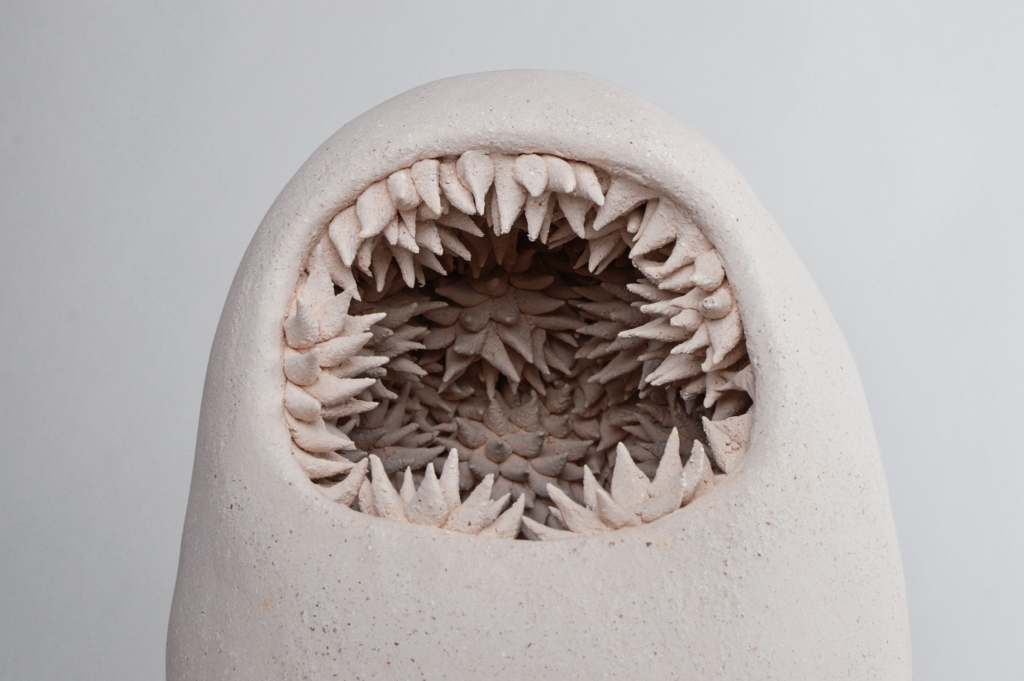
JMT: That’s incredibly exciting! Can you tell me a little bit about the piece you submitted for this prize and the themes behind it?
AA: Yes, this sculpture was made about a year ago in Italy, where I was living at the time. I was preparing for my first solo exhibition outside of Mexico, and everything was new for me. One of the sculptures I created for that show was the piece I submitted for the Loewe Foundation Craft Prize. I was completely surprised and thrilled when it was selected.
This piece is a summary of what I’ve been doing with my work since I graduated from university, where I studied art. The work I do often reminds people of an ecosystem. It feels familiar, like something you’ve seen before, maybe in the ocean or the desert, but it’s also unique. This familiarity makes viewers curious and eager to learn more about it, creating a relationship with the piece as if it’s a living organism.
The title of this piece reflects the idea that ceramics are always hollow inside. There’s a lot of information inside the sculpture that we never see because it’s all covered. The shape is covered with spikes, symbolizing the hidden aspects of things and people. We often only see the surface layer, but there’s so much more underneath. This piece invites viewers to be more curious about the living things around us, including animals, plants, our planet, and, of course, humans.
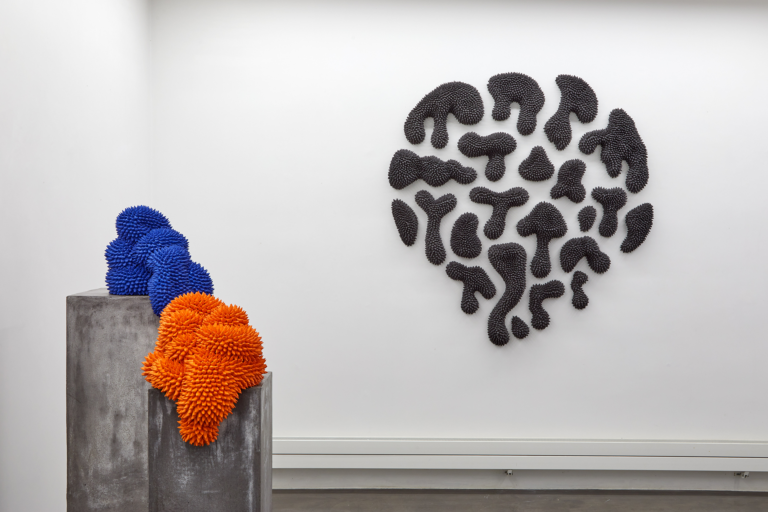
JMT: I love that perspective. Can you tell me a bit about your artistic and creative process when you’re in your studio?
AA: For this particular piece, the process was quite different because I wasn’t in my Mexican studio. In Italy, I worked in a collaborative space surrounded by other artists, which was a fun challenge. I used a different type of clay than usual, but it was great to work with. We had some logistical challenges, like moving the huge sculpture to the kiln on a different floor, but it all worked out.
When I start building something, I generally have an idea of its final form, but a lot happens during the process. Working with clay is a partnership; the material tells me how far I can go, how tall I can make it, and I adjust accordingly. This part of the process requires full concentration. Once the main structure is done, adding the spikes becomes a meditative activity where I can just enjoy the process, sometimes while watching a movie or chatting with someone.
Every piece becomes an experience for me, creating a bond as I spend hours working on it. This connection is like forming a relationship with a living organism, and that’s something I cherish.
JMT: Can you tell me a bit about your hometown, Monterrey, and how it has inspired your work? What’s the art scene like there?
AA: I draw a lot of inspiration from Mexican crafts, although my hometown, Monterrey, doesn’t have many traditional crafts. Instead, I study the rich traditions from other regions of Mexico. The art scene in Monterrey is thriving and growing, which has helped me bridge the gap between art and craft.
Monterrey’s landscape, surrounded by mountains, has been a significant inspiration for me. Growing up with these mountains made me want to incorporate their elements into my work, not by directly portraying them, but by capturing their essence in a contemporary language.
JMT: When did you know that clay was the material you wanted to work with?
AA: That happened thanks to my uncle, who is an artist working with ceramics. When I was in college, he invited me to work with him. Initially, I was just helping him in the studio, but eventually, I started creating my own pieces. I realized I had a strong connection with the material and loved transforming it.
My uncle mainly works with human figures, so I started by copying him, but I wanted to explore beyond that. I wanted to create works that represent aspects of humanity that we don’t usually see. That realization came about ten years ago.
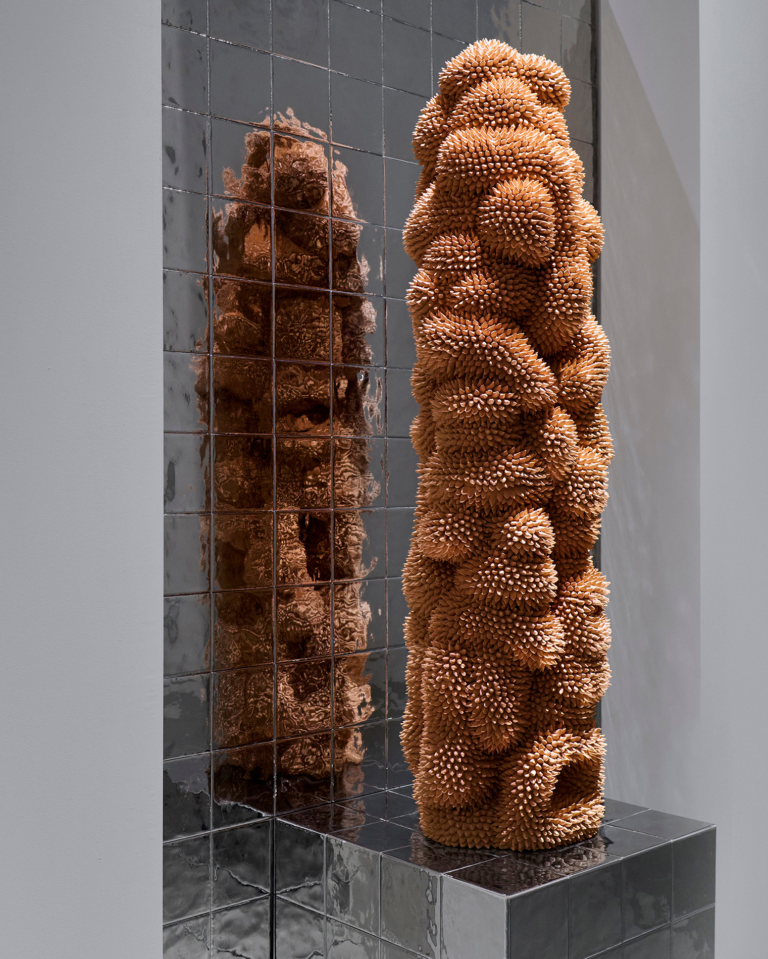
JMT: Can you tell us about your experience with your show in Paris and how the audience received your work?
AA:It all started when I received a call from the Loewe Foundation. I was in Mexico, and I saw a call from Madrid, which was surprising. They told me my work was selected as a finalist, and I was thrilled. The entire process, from receiving that call to preparing for the show, was very professional and made me feel proud to be part of such a prestigious group.
When we arrived in Paris, the 30 finalists met, and there was a real sense of camaraderie. It didn’t feel like a competition; we admired each other’s work. The press day and the awards ceremony were surreal experiences. Seeing my work alongside the other finalists’ pieces was amazing, and the support from the Loewe team made it feel like a family.
On the night of the awards ceremony, there were so many people, including celebrities like Pharrell Williams, which made it even more special. Winning the prize was an incredible honor. The whole experience was quick but unforgettable.
JMT: What do you usually do when you’re not in your studio?
AA: When I’m not in my studio, I spend time at home or visiting friends in Monterrey. We often have carne asada, which is a popular tradition. I also love attending art exhibitions. As I mentioned, the art scene in Monterrey is growing, and it’s exciting to be part of it.
JMT: Are there any upcoming projects we should look out for?
AA: Yes, there are a few. I have two solo shows planned for this year, which I’m very excited about, though I can’t share too many details yet. Additionally, I’ll be participating in an art fair in Copenhagen this fall.
